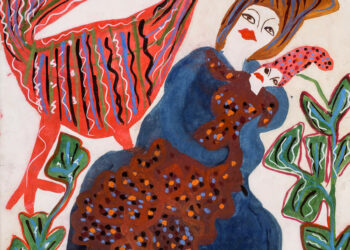A new exhibition in Dubai addresses the subject of language and communication, whilst also highlighting the vast gaps in understanding that can arise when vast portions of society are using a language that is not their mother tongue.
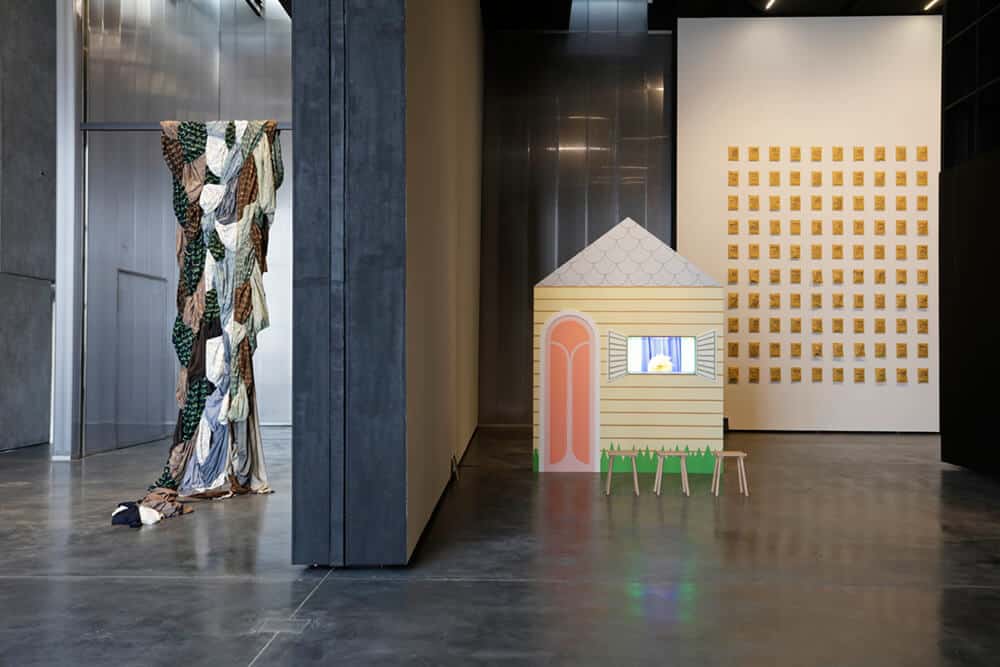 Exhibition view of ‘Ishara: Signs, Symbols and Shared Languages’ in Concrete, March 2018. Image credit: Musthafa Aboobacker. Courtesy UAE Unlimited and Alserkal Programming.
Exhibition view of ‘Ishara: Signs, Symbols and Shared Languages’ in Concrete, March 2018. Image credit: Musthafa Aboobacker. Courtesy UAE Unlimited and Alserkal Programming.
In a city with 200 nationalities and several lingua franca, the term “lost in translation” is usually an apt way to describe the nuance and subtleties of communication that accompany the actual spoken word. Learning to navigate misunderstandings and peculiarities of expression is part of everyday life in the UAE. It is also the basis of a new exhibition, ‘Ishara: Signs, Symbols and Shared Languages’, which includes the work of ten UAE-based artists who all respond to the idea of language as coded communication, but in very disparate ways.
Upon entering the show, Amna Al Dabbagh’s The Hanging Odes, 2018 greets the viewer with its plaited fabric form twisting down from the ceiling to floor. Based on a collection of pre-Islamic Arabic poems called Al Mu’allaqat – often considered as the equivalent to Shakespeare or Chaucer in the English language – the lettering has been embroidered onto the cloth made for every day garments as an attempt to give physical shape to lettering yet simultaneously making it illegible.
Facing this work is a set of three-dimensionally printed works by Salem Al Mansoori. They are also a visual representation of language in that they were made by passing various speech into a specially constructed computerised algorithm, which then interpreted spoken word into a constructed form.
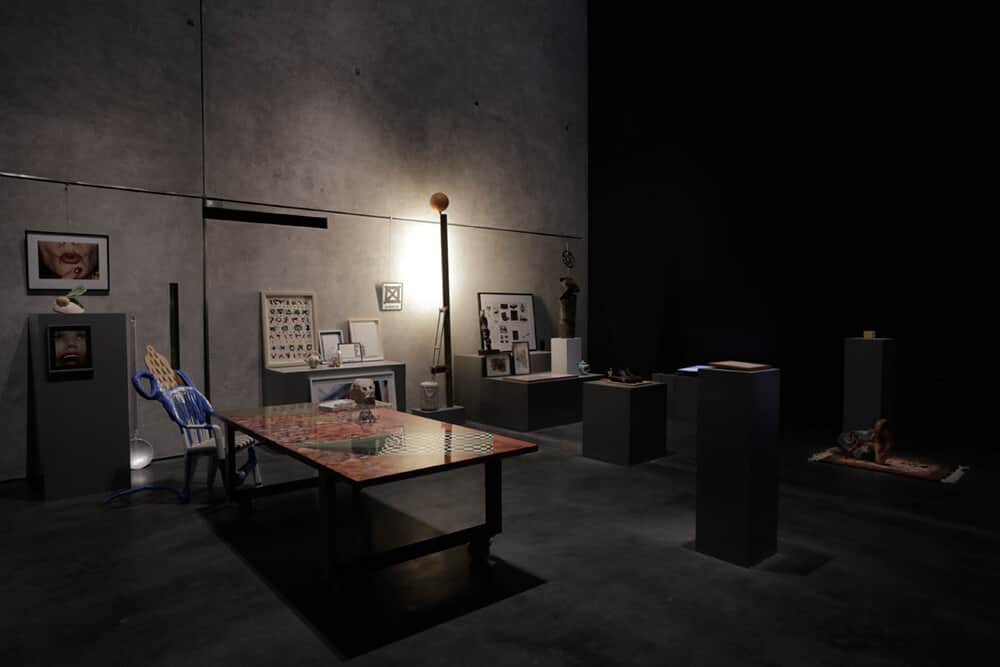 Visual poetry installation by Ramin Haerizadeh, Rokni Haerizadeh and Hesam Rahmanian, March 2018. Image credit: Musthafa Aboobacker. Courtesy UAE Unlimited and Alserkal Programming.
Visual poetry installation by Ramin Haerizadeh, Rokni Haerizadeh and Hesam Rahmanian, March 2018. Image credit: Musthafa Aboobacker. Courtesy UAE Unlimited and Alserkal Programming.
“Where Amna was digging back into the roots of the Arabic language – Salem looks at contemporary texts – but they are both trying to make plastic the gestures and the ephemeral elements of the spoken word,” says Karim Sultan, the director of the Sharjah-based Barjeel Art Foundation and the exhibition’s curator.
Sultan said he searched for a broad subject base to allow the artists involved to respond to it in a wide variety of ways. His role as a curator, was also complemented by Laura Metzler, a senior advisor to the exhibition and Ramin Haerizadeh, Rokni Haerizadeh and Hesam Rahmanian, a trio of eccentric artists who were employed as kind of mentors to guide the participants of this exhibition through weekly reading and discussion sessions conducted as a group. This structure is an integral part of the exhibtion’s hosts: UAE Unlimited. It is a platform founded by one the country’s most prominent – and youngest – art collectors Sheikh Zayed bin Sultan bin Khalifa Al Nahyan. It recognises the importance of supporting and allowing young, emerging artists and curators to develop their skills, by appointing more senior advisers to work alongside them. Such support has allowed the artists to move out of their comfort zone and, in some cases, into media that they have previously been unfamiliar with.
Farah Al Qasimi’s Everybody was Invited to a Party, 2018 pulls inspiration from the 1980s Arabic version of Sesame Street (Iftah Ya Simsim), using puppets to present language and letters as malleable objects without fixed meaning. The video seeks moments where failure to communicate creates a new opportunity and is presented in a playful, make-shift style children’s puppet theatre.
Flounder Lee’s Mycelial Meshing, 2018 is a fascinating piece that uses low frequency sound emitted from speakers at ground level with suspended electrical cables and steel pipes that are supposed to mimic the underground root networks of mushrooms.
“What I am also addressing is the network and infrastructures that human communication relies upon as well as the underlying anxieties of the digital age,” he says.
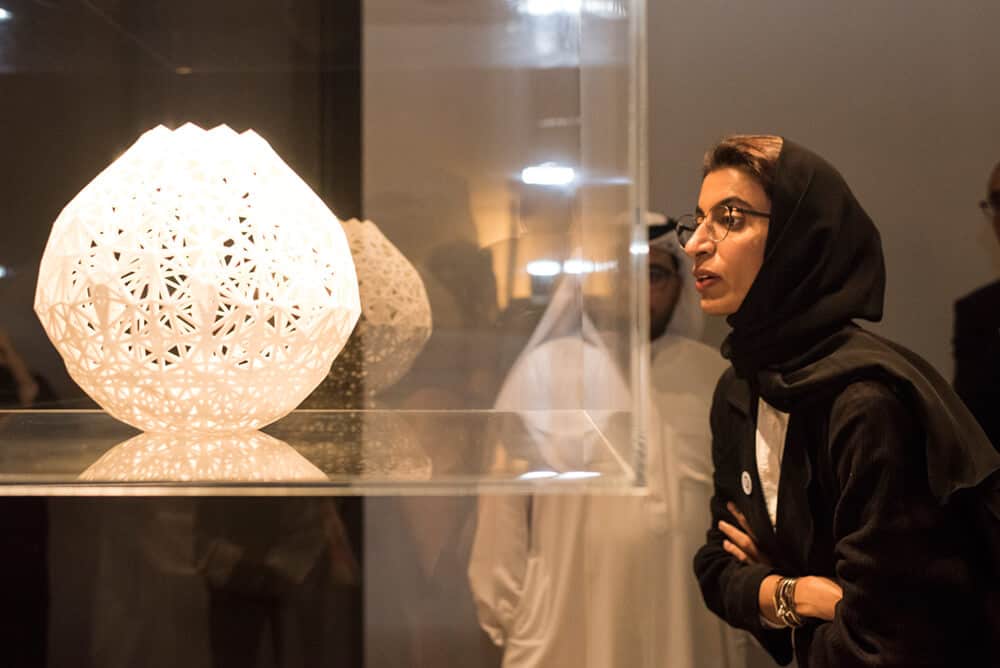 HE Noura Al Kaabi views work by Salem Al Mansoori. Ishara exhibition at Concrete. Image credit: Abbi Kemp, courtesy Alserkal Programming and UAE Unlimited.
HE Noura Al Kaabi views work by Salem Al Mansoori. Ishara exhibition at Concrete. Image credit: Abbi Kemp, courtesy Alserkal Programming and UAE Unlimited.
Coding and structure is a red thread that ties the piece together; somehow representing the most basic form of language function. It can be seen in Nasir Nasrallah’s Forgotten Title, 2018, which consists of 100 everyday objects in envelopes with a coded description painted onto each the surface and Saba Qizilbash’s Land Marks, 2018 that depicts the physical spaces of geographical borders as a metaphor for the no-man’s land between languages and gaps in comprehension within words of the same language.
Sheikha Al Ketbi’s Ath’thaniyah, 2018 is one of the most moving pieces. It is a performative video work showing the artist recreating a subconscious vision of climbing stairs in a barren landscape towards a satellite dish. Her interest in objects as animated beings comes into play as does a metaphysical interpretation of communication: that between her inner and outer beings.
“The idea of a middle ground upon which communication can take place is present in all the works. I wanted something that really relates to the location of the UAE but that also showcases the breadth of creativity we have here,” concludes Sultan.
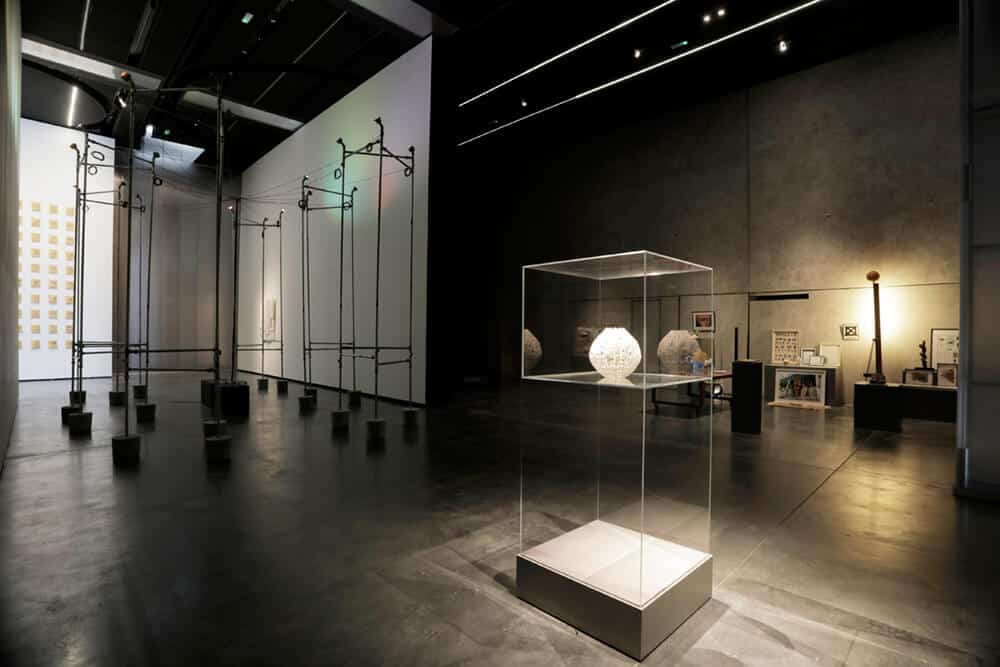 ‘Ishara: Signs, Symbols and Shared Languages’ exhibition view, March 2018. Image credit: Musthafa Aboobacker. Courtesy UAE Unlimited and Alserkal Programming.
‘Ishara: Signs, Symbols and Shared Languages’ exhibition view, March 2018. Image credit: Musthafa Aboobacker. Courtesy UAE Unlimited and Alserkal Programming.
Anna Seaman is an arts and culture writer and journalist adding a voice to the conversation around contemporary art.
